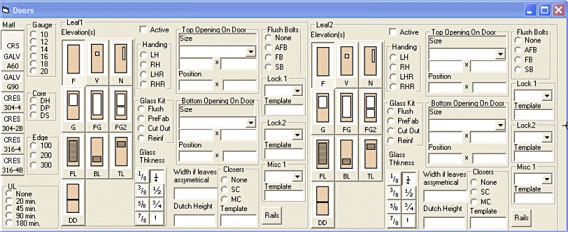
 |
|
|
|||||||||||||||||||||||
|
The estimating module is designed to:
The estimating system is highly configurable, and may have a significantly different appearance and function in different installations. Different forms may be available, depending on whether the user is a distributor, in-house estimator, field estimator, or customer. However, whichever form is used, the information is always stored in the same way in the same data structures, and can be reviewed and manipulated using any of the approaches. Estimators are among the most difficult of our users to convince to switch to computerization. They argue that they are spending time on orders they may not even get, and have to be quick. They typically have worked out methods of short hand squiggles that allow them to quickly summarize a job and develop a price book. We had to develop forms that would allow them to enter in a similarly efficient way. This way they would use the system, and derive all its benefits, including:
Here is an example of forms developed for this quick “click-click” approach by experts doing take-offs. The forms can even be manipulated using a hands-free, voice recognition approach when working on large architectural drawings occupying the whole table. |
 |
|||||||
 |
|||||||
|
Figure Example of DRI's Hollow Metal EstiQuick with Door Detail Form in Expert Mode |
|||||||
|
The form has a lot of intelligence. For example, put in any two of the frame/door width or height variables and the system computes the rest. Specify a particular rating and elevation style, and the system displays the opening sizes that are legal and for which there are standard window kits. Wherever defaults and calculations can speed the entry process and enhance accuracy, they are used. |
|||||||
 |
|
Figure Sample Door Summary Spread Sheet |
|
The details in the forms and spreadsheet would vary to match the customer’s products and standards. The estimate can also be generated from an opening schedule. This approach is useful, for example, when front-end software is used by the customer or distributor. DRI can supply such front end software that you can offer your customers and distributors, and we can also accept data from other software packages used in the industry. The information and rules used to drive the system are managed by a database, and can be manipulated in formats that in-house personnel are comfortable with, such as spread sheets. The number of elevations, sections, material types, and other references that can be supported is unlimited. The system can prepare estimates, cover letters, accompanying notes and exceptions, and other documents in any format. |
| [Complete] [Estimating] |